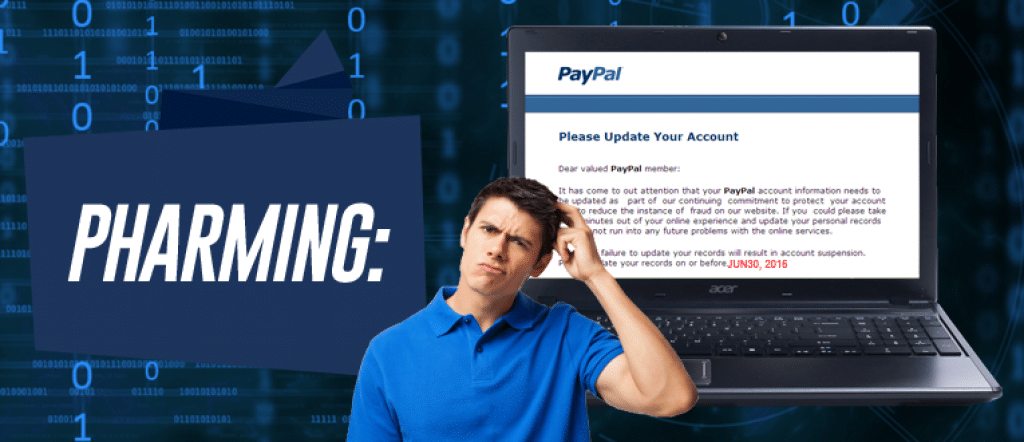What is Pharming?
In the cyber world, Pharming is a fraudulent method identity thieves use to redirect a user to a bogus website in order to get personal information.
Victims won’t even necessarily know what has happened.
How pharming works
Pharming occurs through Domain Name System (DNS) “poisoning.”
In this type of attack, a domain name is changed so that a user is directed into a fraudulent website, though he or she believes they have tried to access a legitimate site.
When web users end up on these dangerous sites, there’s often no obvious sign of a problem.
Fixing a DNS issue can be particularly difficult, because spyware removal software doesn’t often recognize pharming.
And once a victim ends up on a fraudulent website disguised as a legitimate one, anything shared there – such as a bank account or credit card number, or even a password – can end up in the hands of a cybercriminal.
What happens next? Identity theft.
Are you at risk?
If you use a home network, the threat of pharming is a serious one.
Once your network has been attacked, not even the best firewall or software can prevent or even detect the problem.
Pharming should not be confused with “phishing,” which occurs when a computer user receives a link through email that appears to be legitimate, when in fact it’s a spoof.
Instead, pharming is easier to miss, and that puts everyone at risk of being a victim.
In some cases, college students are often specifically targeted with pharming techniques.
According to the Identity Theft Resource Center (www.idtheftcenter.org), students might be directed to fake job applications on the Internet.
They are then asked to provide a Social Security Number and perhaps bank account information.
But the truth is, there is never really a job, and instead, a cybercriminal has stolen the student’s identity.
Banks or other e-commerce sites are often caught up in pharming scams as well.
How to protect against pharming attacks
Perhaps most the most important way to avoid becoming a victim of pharming is to use a trusted Internet Service Provider (ISP).
A good ISP is often the first and best line of defense to screen out bogus pharming attempts.
Some anti-virus softwares can offer a certain level of protection.
It’s important to keep your software up-to-date.
One popular protection against pharming is from OpenDNS, a Cisco tool that helps fight against phishing and pharming.
OpenDNS offers a couple of free services, as well as products available for a yearly fee.
It’s important to know that OpenDNS keeps an updated list of malicious websites and helps to block those sites when a user tries to access them.
When you visit a website, wait for the page to completely load and then verify that the URL appears legitimate.
Is it spelled correctly? Are there letters or words that appear to be even slightly out of place? These can be signs that you’re on a dangerous website.
And when you’re conducting a transaction with a bank or other service involving the exchange of private information, make sure you’re on a secure site.
Do this by making sure the web address includes “https” rather than “http.”
The “s” should mean that the site is secure; check this before inputing a password or personal identification information.
You can also look for a padlock icon, which is another known symbol that a website is secure.
If you have a home network or even a small-business network, change the name and password from its factory settings.
For help with this process, refer to your router manual or visit the manufacturer’s website.
Leaving the username and password unchanged allows hackers to easily obtain access.[/vc_column_text][/vc_column][/vc_row]

